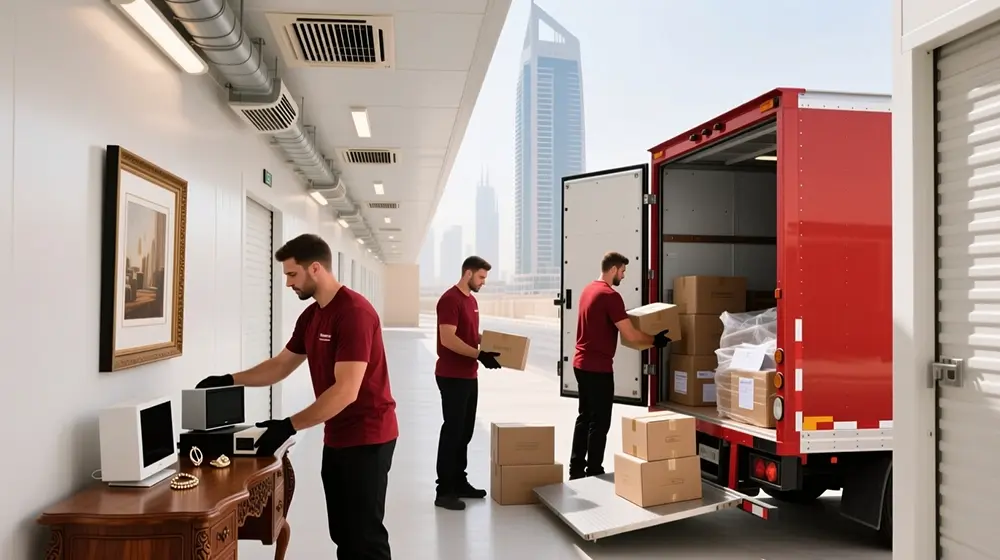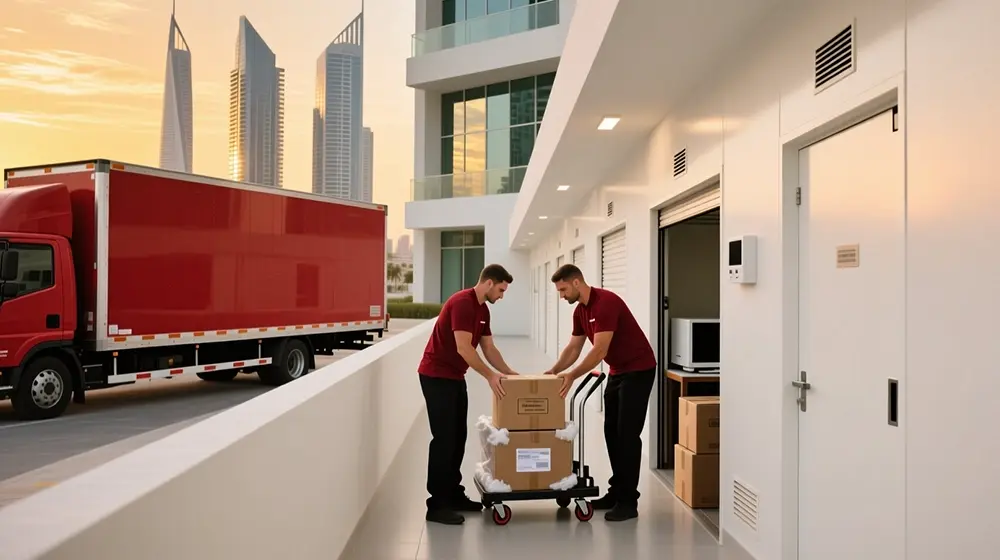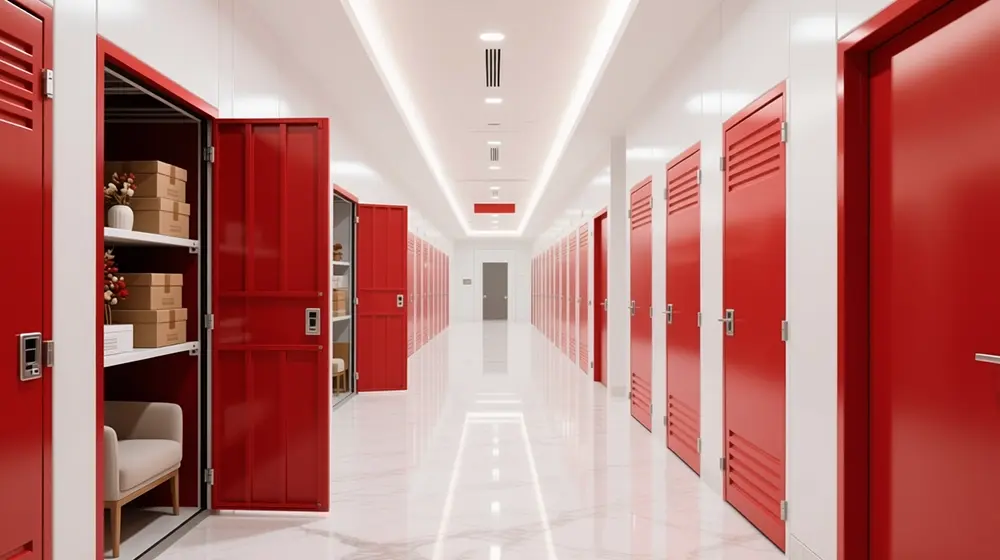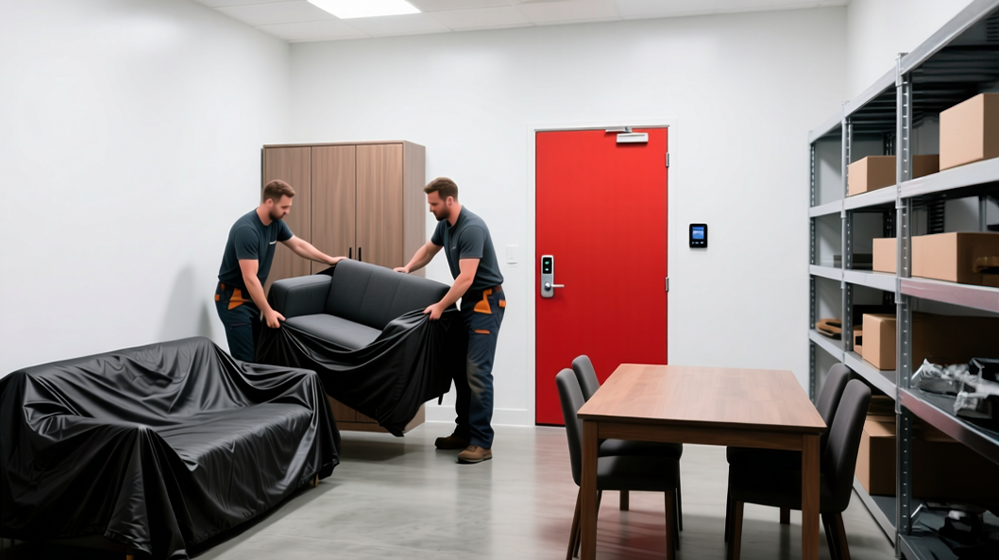The climate-controlled solutions offer regulation of temperature and humidity to conserve household goods in the event of downsizing apartments in Marina. In Dubai Marina, downsizing causes a decrease in interior space by 25-40 percent because of the convergence of large waterfront apartments into tight city planning. Items that are too bulky to fit into new designs are more vulnerable since balconies, corridors and rooms that can not be insulated are exposed to the daily humidity changes which occur due to closeness to the sea. Under the coastal weather condition, Dubai Marina has recorded relative humidity ranging between 62-76 percent. Those levels are above preservation levels related to electronics, furniture, artwork, and textiles. That is why downsizers frequently resort to such regulated facilities as climate-controlled storage Dubai and self storage in Dubai in the times of relocation.
How do climate-controlled units protect downsized belongings?
Preservation in climate-controlled units maintains objects by maintaining temperature between 22°C-26°C and a relative humidity between 45%-55%, preventing absorption of moisture, corrosion, and microorganisms. These scales are applicable to preservation guidelines in libraries, archives, museum storage facilities, and electronic warehouses. The growth of moulds goes up to a lot more than 60% RH. Wood varies in dimensions at fluctuation of RH exceeding 10%. Electronics exhibit greater corrosion rate when left in the environment with conditions of over 27°C over time. By suppressing thermal oscillation to a minimum of +-2°C in less than 24-hours, climatically regulated units eliminate these material reactions. The stability reduces the risk of cumulative damages during the downsizing process of multiple phases.

Why do Marina downsizers require climate-controlled storage more than other residents?
Hardly any interior space and high concentration of aerosols of the salt content and the humidity of the coastal climate predisposes the threat of deterioration to the marina downsizers that need climate-controlled storage. Dubai Marina is a residential area that has direct exposure to salt air and humidity in the Gulf that hastens the corrosion of metals, changes in molds, and swelling of wood. Even within normal levels of humidity, salt crystals absorb moisture and form micro-corrosion. Small apartments on Marina do not have a lot of storage areas so the inhabitants find themselves accumulating their property close to windows or on the balconies or in the basement where it is easy to get condensation. Controlled storage reduces these environmental impacts of the coasts and offers uniform preservation during the space transitions.
Which items require climate-controlled storage during Marina downsizing?
Seven categories of items benefit most: wooden furniture, electronics, textiles, documents, artwork, leather goods, and metal-based appliances.
- Wooden furniture: Swells under repeated humidity cycles above 60% RH. Veneers crack with RH variance exceeding 10%.
- Electronics: Corrosion increases 6%–10% when exposed to high humidity and heat. Circuit boards absorb moisture through ventilation gaps.
- Textiles: Cotton absorbs moisture at 60% RH. Synthetic fibers attract dust particles and microbial spores.
- Documents & books: Paper oxidizes faster above 27°C. Relative humidity above 55% causes wrinkling and fiber expansion.
- Artwork & photographs: Temperature fluctuations destabilize canvas fibers. Humidity causes pigment cracking.
- Leather goods: Absorb moisture and develop mold activity at RH above 65% within days.
- Metal appliances: Salt aerosol increases surface oxidation by 12%–20% depending on exposure duration.
For furniture that cannot remain in compact apartments, preservation conditions match those seen in furniture storage in Dubai.

How does humidity control reduce damage during Marina downsizing?
Humidity regulated the control prevents mold, bacterial growth, dimensional change, and failure of adhesives in all household material. When RH is kept at higher than 60 percent, the mold spores are activated within 24-72 hours. Wood, veneer, and paper-based items adhesives become soft when in contact with moisture. The glues, joints and finishes degrade faster in high humidity. These risks are aggravated in Marina due to coastal humidity, which raises the level of indoor RH in the course of evening and morning cycles due to wind-driven moisture. Climate controlled units prevent these reactions before they occur by keeping RH below 55.
What features define effective climate-controlled units for Marina residents?
The functionality of effective climate control units is as follows: temperature controls, humidity, HEPA filtration, enclosed building, and stable air flow.
- Temperature control: 22 deg C-26 deg C. Minimizes thermal deterioration.
- Stabilization of humidity: Maintains the RH at 45-55% without reaching the mould growth limits.
- HEPA filtration: Filtration of particles [?]0.3 microns containing spores and dust.
- Sealed construction: Barricades salt aerosol intrusion.
- Stable airflow: Prevents the condensation areas and microclimates within the unit.
- The appropriate size is determined by the total inventory volume, with a reference to a storage unit size guide usually being used by the residents.
How long should Marina downsizers use climate-controlled storage?
Depending on the times of relocation, Marina downsizers usually take up climate-controlled storage of between 30 and 180 days.
- Phase 1 (0-30 days): Categorization and sorting.
- Phase 2 (30-60 days): Optimization of the layout in the new apartment.
- Phase 3 (60-90 days): Retention or disposal of items on a long-term basis.
- Phase 4 (90-180 days): Seasonal rotation and minimised-living adaptation.
The environments that are controlled by climate are stable at all stages and do not lead to the progressive degradation that takes place in the unregulated environment.
How cost-efficient is climate-controlled storage for downsizers?
Climate-controlled storage is also economical since it saves 22-38 per cent replacement costs of delicate products. Electronics, furniture and artwork are considered high-value goods and cost more to restore when they are subjected to unregulated moisture. The extra cost of the climate controlled storage will be compensated by the longer life of the stored products. Downsizers compare financial planning and environmental risk reduction to the cost of storage in Dubai reference data.
Which unit sizes are appropriate for Marina downsizers?
- Depending on the size of the apartments and the volume of inventory, downsizers normally need 30 sq ft, 50 sq ft, or 100 sq ft of climate-controlled space.
- 30 sq ft: Ideal to contain 15-25 boxes, decor, documents and seasonal.
- 50 sq ft: This would fit the overflow of a one-bedroom apartment, with small appliances.
- 100 sq ft: The area is appropriate to downsize two-bedroom accommodation with sofas, beds, and medium-sized furniture.
These size categories are in line with realistic application patterns in the storage units in Dubai.
Also Read : Don’t Overpay for Space: Smart Storage Unit Size Guide in Dubai
How does air purification support long-term preservation?
Air purification minimizes air dust, fungal spores and surface deposit of particulates, enhancing the preservation of textiles, electronics and artwork.
HEPA filtration reduces the high particle density and decreases the micro-scratching on screen and sensitive finishes. Evenly distributed humidity prevents mold pockets which might be isolated in isolated spots due to the uniform distribution of air. The stabilized preservation environment is the result of regulated humidity and purified air.
Do Marina residents need short-term or long-term climate-controlled storage?
- Are short-term and long-term climate-controlled storage requirements by Marina residents?
- Both long-term and short-term climate-controlled storage is used by Marina residents depending on the pace of downsizing, volume of inventory and time of relocation.
- Short-term (30-90 days): It is used in the process of packing, moving, and changing the apartment layout.
- Long-term (90-365 days): Those that are used seasonally, infrequently, and excess in case of small tenancy.
The climate-controlled units mean that there is uniform protection in both periods, which is a best practice in the long-term and short-term guidance on storage in Dubai.
Why does contextual flow matter when selecting climate-controlled storage?
The issue of contextual flow is due to the fact that downsizing, an exposure to moisture, and the preservation of materials constitute an ongoing sequence of the environment. Reducing the interior space is brought about by downsizing. Humidity along the coastline augments the risk of deterioration. Environmental variables are stabilized in climate control. This chain is the preservation logic that will direct storage choices among the residents of Marina.
Conclusion
Climate-controlled storage offers Marina residents a practical way to keep important belongings safe while moving into smaller apartments. The coastal climate in Dubai Marina brings high humidity and regular moisture swings, which can harm wood, electronics, artwork, and textiles. By keeping temperature and humidity steady, these units prevent warping, mold growth, corrosion, and fading—issues that often appear when items are stored on balconies or in uninsulated rooms. Many downsizers rely on climate-controlled storage through the entire transition period, whether they are sorting belongings, preparing a new layout, or storing long-term seasonal items. Consistent airflow, sealed construction, and fine-particle filtration add another layer of protection, giving residents a stable and controlled environment that supports every stage of the downsizing process.






